Marvel Comics' Spider-Man celebrates his 60th anniversary this year and he will be inducted into the Comic-Con Museum's Character Hall of Fame. To celebrate his legacy, Comic-Con Museum is opening Spider-Man: Beyond Amazing - The Exhibition on Friday.

In 1962, comic book readers were introduced to teenager Peter Parker, who was bitten by a radioactive spider and gains superhuman strength, speed, agility as well as the ability to spin webs and cling to walls. Spider-Man became Parker's superhero alter ego.
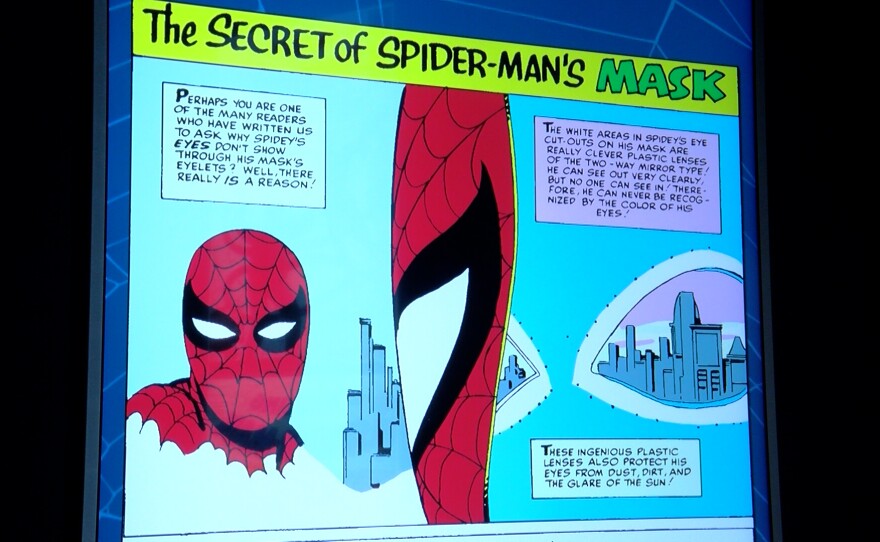
The Spider-Man comic was created by Stan Lee and Steve Ditko for Marvel and the character struck a chord with audiences.
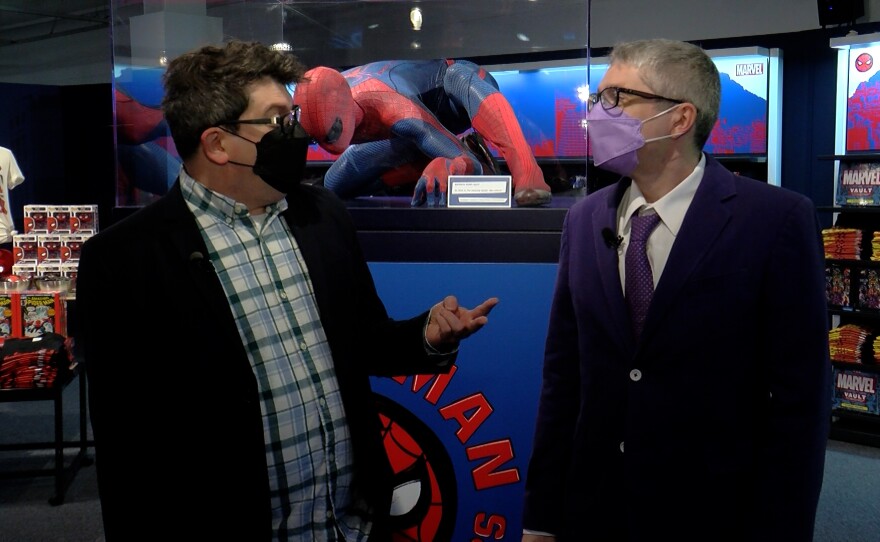
For co-curator Ben Saunders as a child growing up in Wales, Spider-Man was his first introduction to moral ambiguity.
"I remember being confused by the police chasing him in the very first Spider-Man comic that I ever read," Saunders recalled. "Now I understand that to be a classic aspect of the character, which is that he performs his acts of heroism, and they're continuously misrecognized, and he is almost never rewarded for doing the right thing, and he does it anyway. In fact, he's often misunderstood as a criminal. So I'm reading this story and I turned to my mother and I said, 'Is he a goodie or a baddie?' And she said, with a name like that, I think he must be a baddie. Obviously, she was wrong."
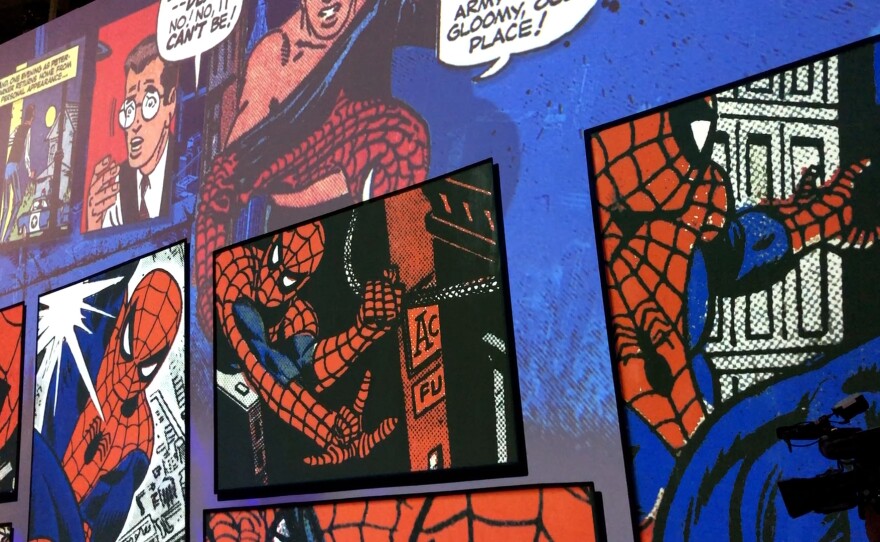
For co-curator Patrick Reed, it was the wow factor of Spider-Man that caught his youthful eye.
"The first thing you see is the image," Reed said. "You see someone who can climb up a wall, someone in an amazing colorful costume with their face hidden behind a mask. Someone who's shooting webs from their hands and swinging over the city. There are both the textual elements of Spider-Man that continue to resonate and the sort of innate magic of it, that almost inexplicable quality of wonder and excitement and joy and just sheer wow."

The new Spider-Man exhibit at the Comic-Con Museum tries to capture that wow factor.
"We have 60 years worth of pop cultural material to draw upon from across pretty much every available media platform," Saunders said. "We're talking not just about comic books, not just about animated cartoons, not just about movies, but also video games, action figures, and toys. And that's because this is a character that has won people over generation after generation."
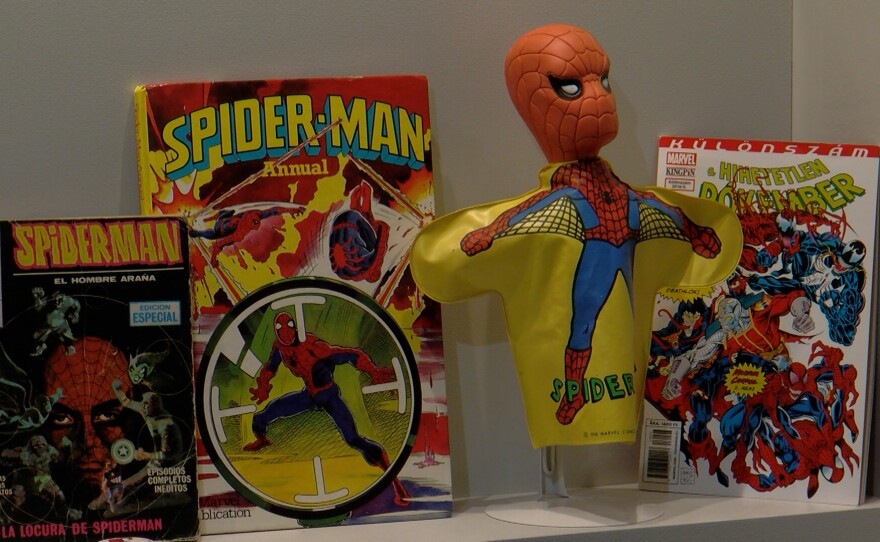
Trying to decide what to put in and what to leave out was a challenging process.
"When you tell a story in a museum exhibition, you're basically telling a story through objects and artifacts," Saunders added. "So what kind of artifacts do we want to prioritize? We made the decision quite early on not to have a lot of actual comic books. And we don't usually do that, partly because they're rather small, they don't display terribly well, but we love taking pages of panels from them and blowing up backlighting them, playing with the reproductions, perhaps animating an element from them. So we were making decisions about what to include, partly based on what kind of media and artifacts were available to us to tell the story."
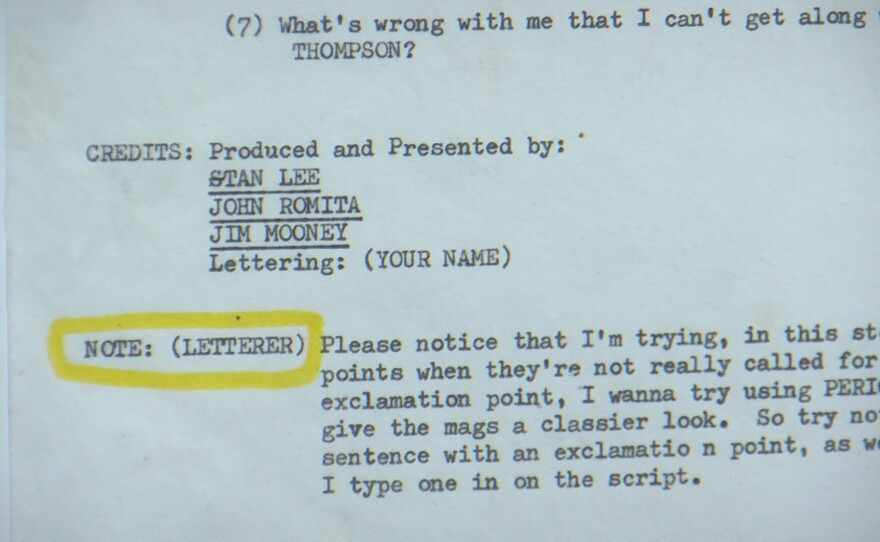
Reed explained, "We're dealing with a character that has appeared through all of these different media. And so we were able to cherry pick pieces of all of these different forms of media to tell this story in its own medium in a museum exhibition and take the elements that we liked and present them in a unique and compelling way."
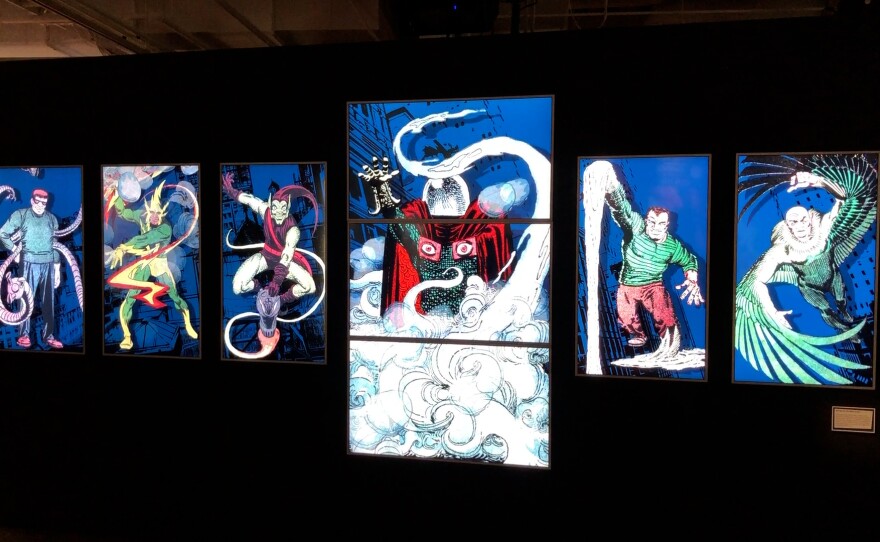
So there is a wall of monitors where visitors can watch the Spider-Man comic book villain Mysterio conjures up a rogue's gallery of co-horts.
"We also use all sorts of modern techniques," Reed said. "Lighting, projections, high definition digital canvases to tell the story in a more kinetic way, interactive touchscreens in different areas that you can go to and go deeper and read more about the text."
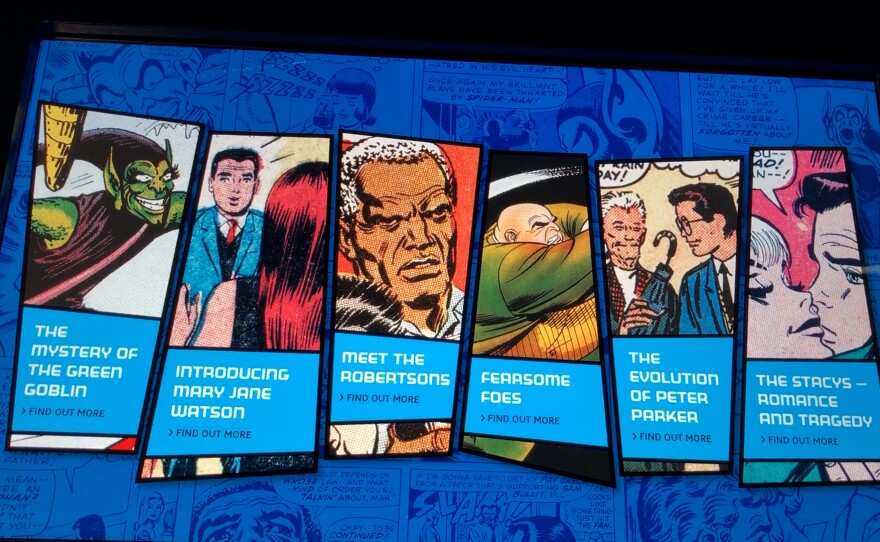
Reed added that he and Saunders were constantly asking themselves, "How do we bring this element of a comic book to life? How do we make this element from the animated cartoons resonate in a museum environment in a walk through, in an actual experiential space? Oftentimes we didn't have an initial answer to those questions. It was, as we boiled down the narrative and the story, we could say, oh, here's this artifact that fits that plot beat. Here is this artifact that fits this topic that we want to address. Here is something that will resonate with an audience of a certain age. Here is just an incredibly iconic image that you don't need to know anything about Spider-Man to appreciate. You see that and you realize that it's cool and it's compelling, and you want to study it and dig deeper."
The exhibit digs deeper into such things as the social context in which the Spider-Man comics came out.
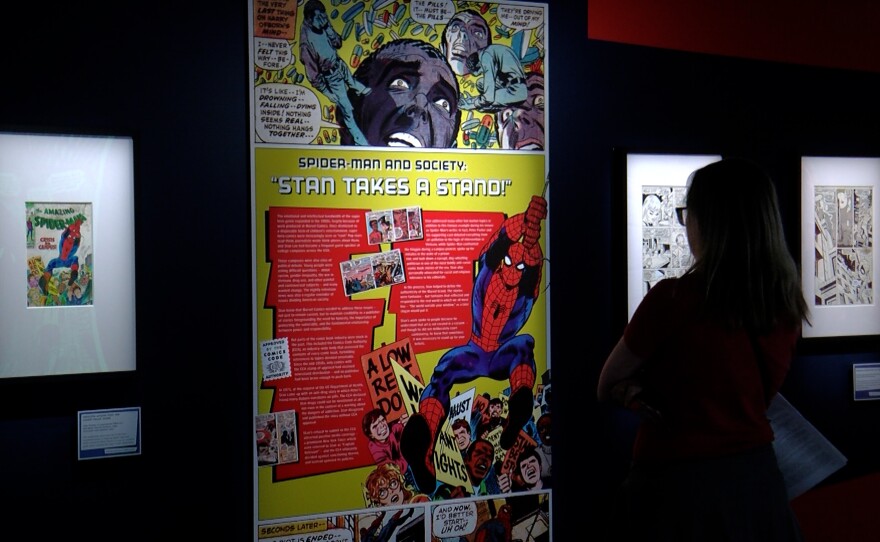
The curators wanted to make sure that no matter what your entry point to Spider-Man was — the comics, the cartoon, video games, movies — that you would find something to connect with at the exhibit.
Spider-Man's popularity is tied to his relatability. One of the things contributing to that stems from how the character reimagined the comic book superhero.
"When Stan Lee and Steve Ditko initially came up with Peter Parker and Spider-Man, they were playing with a relatively new concept, even in just sociological terms, and that's the concept of the teenager," Saunders explained. "In the 1950s, America discovers the teenager as a kind of identity category where there's this almost cultural obsession with this new idea or new species of humanity that they're calling the teenager. And it's a period of life that is marked by uncertainty about identity and rapid mood swings and periods of bravado and periods of self doubt and impulsiveness. And they took all of that and they made the hero that, which is something we hadn't seen before."
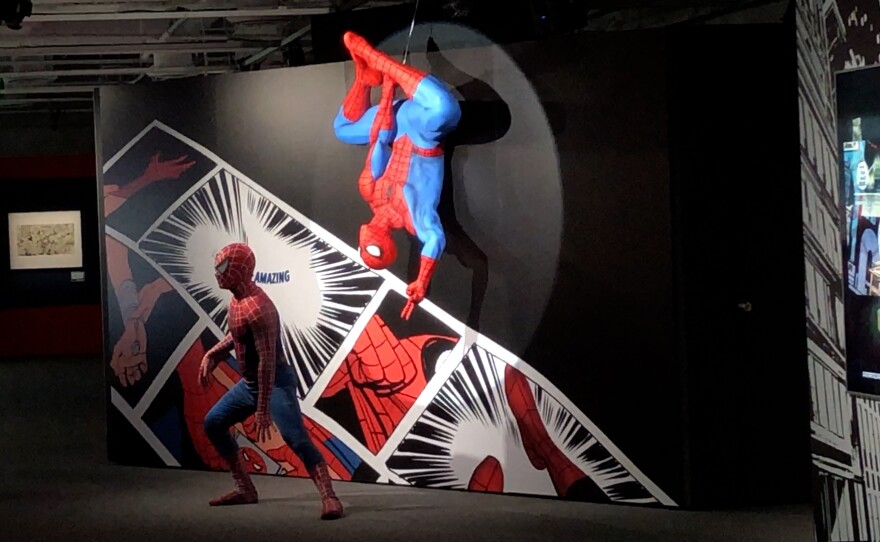
The exhibit also includes original art that provides some insight into the creative process of creating a comic book.
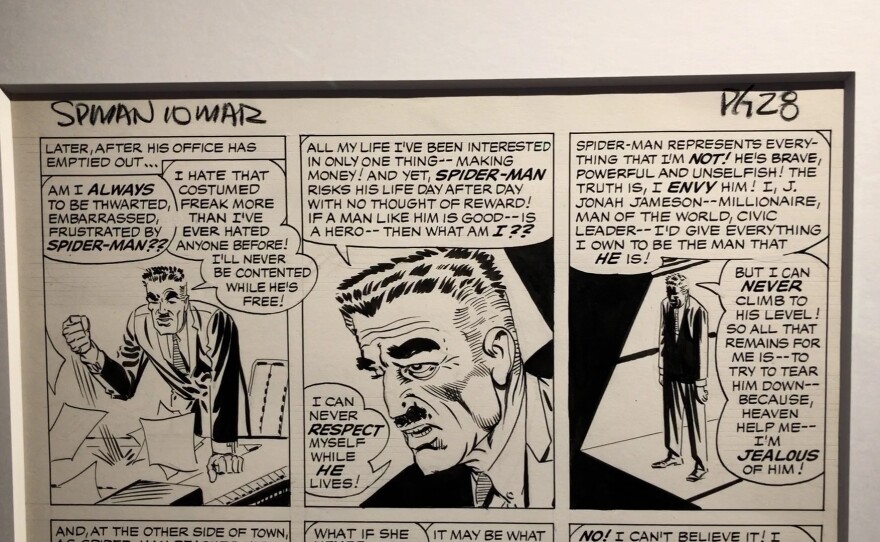
"The originals are usually two or three times the size of the comic book page," Saunders said. "They're black and white, pencil and ink. You can see all the past ups, all the corrections, all of the white out, all of the lettering that's been stuck on and is starting to peel off all of the evidence of this as an artifactual thing, as they made it. It's right there on display for you."
But there's also a romance to it as well.
"It comes down to the miracle of human creativity, in that it began with somebody working at home at a desk with a pencil," Saunders said. "And there's something about the romance of that creativity and of the way these things just rise up from the Bristol board and become what they have become in our collective imaginations. The art remains, for me, one of the most exciting things about a museum exhibition devoted to a character like this."
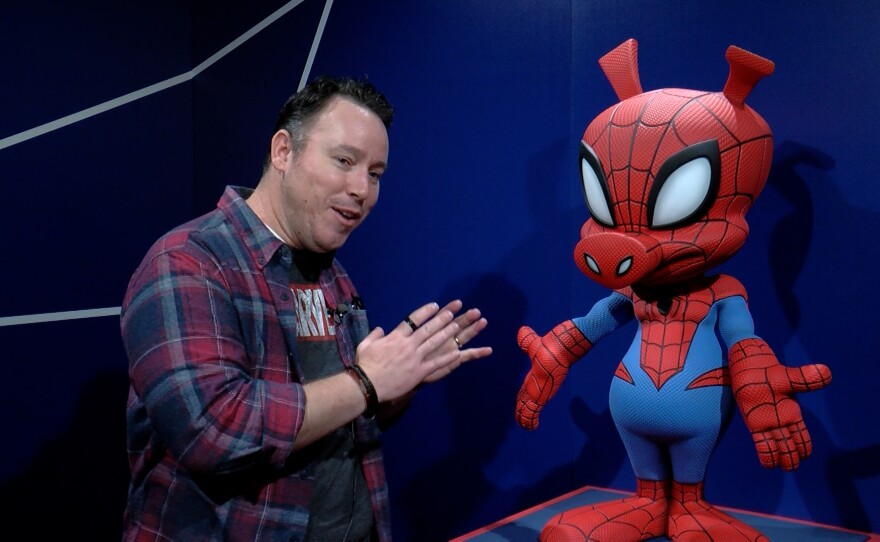
But Reed pointed out that there are also, "all of these experiential, immersive spaces, either with physical sculptures or digital elements that also bring the characters to life in unique ways that you really couldn't do outside of a museum exhibition. We also use all sorts of modern techniques — lighting, projections, high definition digital canvases — to tell the story in a more kinetic way."
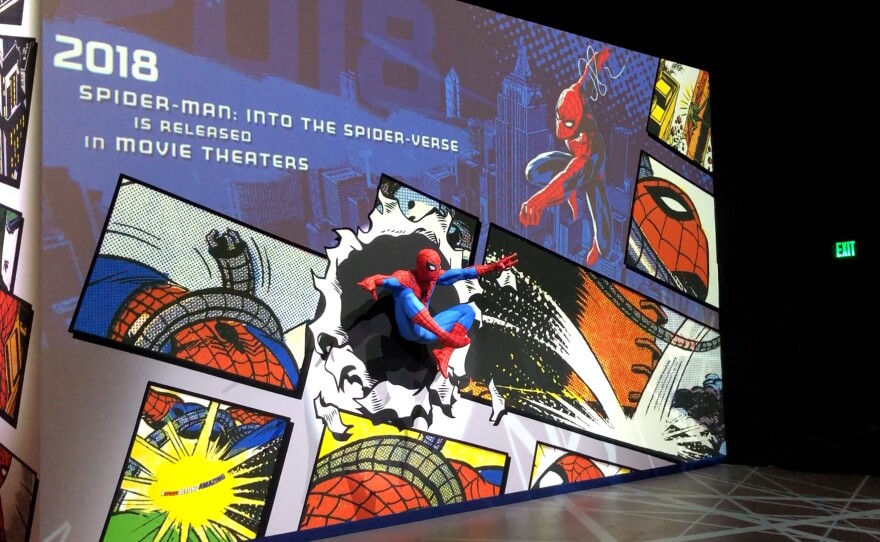
Spider-Man/Peter Parker also connects with people through his basic humanity.
"Peter Parker can help us figure out also what's valuable about trying to figure out who you are in a world where things not only go wrong, but often are wrong," Saunders said. "He helps you to try and figure out what your sense of justice actually might be in a space like that. And I like the idea of living in a world where, at least theoretically, the notion that with great power there must also come great responsibility is taken seriously. I mean, how much better off would we all be if there were more people in the world in positions of power who understood that some responsibility comes with that role? It's a good message."
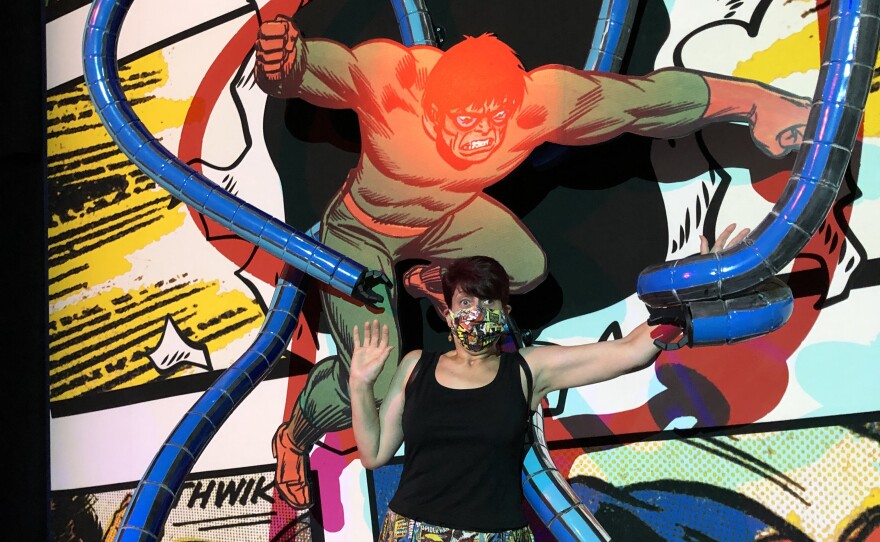
Spider-Man: Beyond Amazing - The Exhibition will be at Comic-Con Museum through the beginning of next year. Admission prices range from $18.00 to $30.00. You can breeze through the exhibit in about 45 minutes or spend hours reading all the information posted throughout the museum space.













